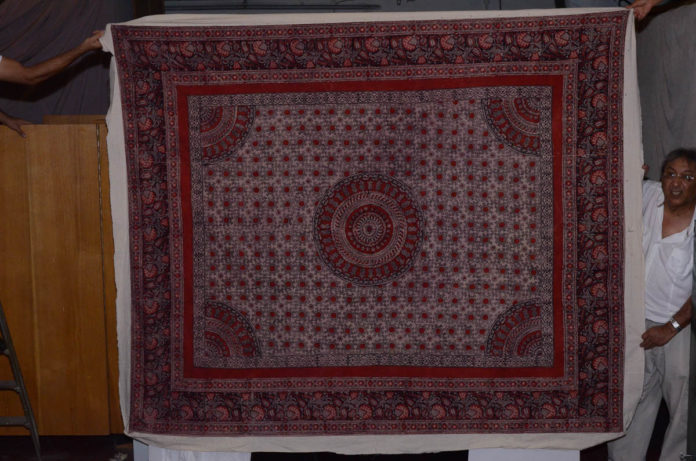Block print is one of the most common methods of decorating fabric in many regions of Uzbekistan. The tradition of decorating fabric by block print patterns with kalyb (carved wooden stamp) has an ancient history. Uzbek prints were originally made from cotton only. Production of printed fabric was widespread in the first half of the nineteenth century.
By then, a wide range of handicraft industries produced various products with printed pattern in Uzbekistan. colour range of ornamented printed fabrics was quite wide, from red and black print to intensive blue-black and indigo combination. Pattern was applied by hand on a specially prepared cloth, soaked in a solution of tannin, with the use of kalyb. Main outlines of a pattern came from a black colour stamp that was made mostly from pear tree. The ornamental motifs are tyically floral, including anor (pomegranate), tolbargy (willow leaves), lolagul (tulips) and bodomgul (almond). Traditional folk art has preserved only one kind of print that is still widely used today—a combination of black and red colour print.
In the nineteenth and twentieth centuries, Bukhara, Urgut, Samarkand, Kattakurgan, Shakhrisabz, Tashkent, Margilan, Kokand and Khiva were famous for their prints. Along with production of long printed fabrics, one of a kind single piece items were also made, such as table cloths and blankets. Print was used on women’s dresses, scarves, as well as a lining for men’s quilted robes, tablecloths and bedspreads.
Currently, traditional print is made in Tashkent, Bukhara and Margilan. Modern artisans, carefully preserving the ancient tradition of printing, continue to develop it, enriching with new motifs and compositional variations.





